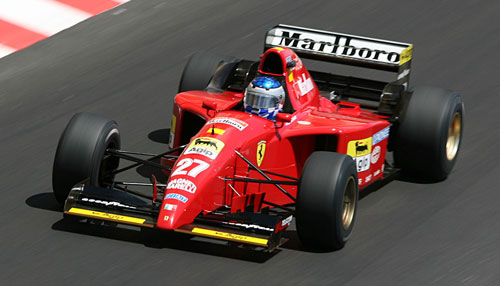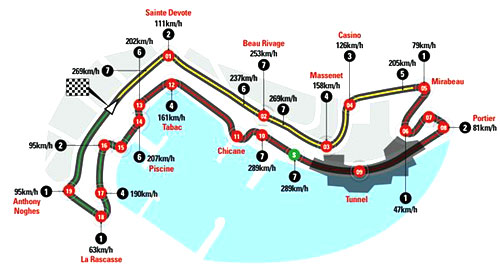The Aesthetics of Racing: Ferrari 412T

As much as automakers (especially those in the performance business) would like you to think otherwise, 95% of any road car’s external shape is driven by style. The aerodynamicists may have a bit of input around the edges, and there are certain interior volumes dictated by marketers and engineers, but by and large, style rules the roost.
Race cars, on the other hand, are designed and built with no concern over whether or not a pleasing shape results. If severe, brick-like contours will help it “do the job” and cut through the air faster on its way to a win, those are the priorities that shape the car. That said, in spite of the fact that form overwhelmingly follows function in the auto racing world, stunning and often beautiful bodywork frequently emerges from the engineers’ drawing boards. Today we begin a new series looking at race cars that, successful or not, in their single-minded pursuit of speed, happened to be visually arresting as well.
The Ferrari 412T, campaigned by the storied Italian team during the ’94 and ’95 F1 seasons, with Gerhard Berger and Jean Alesi at the wheel, was the last hurrah for the Ferrari V12 in Formula 1. After turbocharging was banned starting with the ’89 season, teams had reverted to naturally-aspirated 3.5l V8s, V10s and V12s, Ferrari being the last holdout for the latter configuration. Compared to its competitors, the Ferrari engine was more powerful, offering more straight-line speed, but was heavy and complex, impeding handling and making reliability an issue.
Still, the 412T undoubtedly represented the beginning of Ferrari’s comeback after the championship drought of the ’80s and early ’90s, a resurgence that culminated with Michael Schumacher’s string of 5 world titles starting in 2000. Conservative and simple, the 412T also happened to be quite a beautiful car, and its shape, along with Ferrari’s underdog status that year, secured my fandom for the seasons that followed.

In a constant state of development throughout the ’94 and ’95 seasons, the 412T appeared in two primary external shapes, the switchover happening partway through the ’94 season. The first iteration was called the 412T1 (shown at top) and featured a raised, rounded nose and smaller sidepod air intakes. The 412T1B and 412T2, the latter pictured above driven by Jean Alesi, eliminated the raised nose and greatly enlarged the sidepod intake area. Coupled with the knowledge that they’re sporting a hugely powerful, classic Ferrari V12, either variation of the 412T shape is brutally elegant and completely stunning. In my mind, it’s the last “classic” Ferrari F1 car, its immediate successor the F310 and all the cars that followed being maimed by safety and regulatory changes, and looking far too computer-designed as well. The 412T was the swan song of the organic, assembled-by-an-actual-human Ferrari F1 car, and as such it stands alone.
Editor’s note: This post is part of a series examining the aesthetic merits of cars designed almost wholly with function in mind. Read the other installments here:













